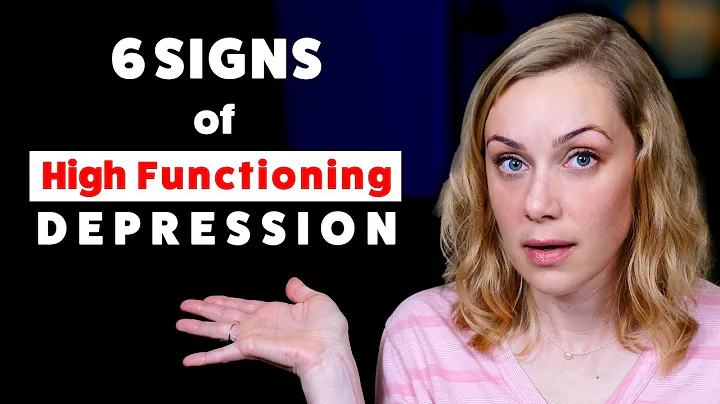Psychology
core test points 1
research object of psychology
[Frequently tested question type] Single choice, multiple choice, judgment
(I) Psychology is a science that studies psychological phenomena (psychological activities) and their occurrence and development laws.
(II) Psychological phenomenon and its structure

(III) Attention is not a separate psychological process, but a psychological state accompanied by various psychological activities.
(IV) Personality psychological tendency is the basic driving force for people to carry out activities and is the most active factor in personality structure.
core test points 2
Nervous system
[Frequently tested question type] Single choice, multiple choice, judgment
(I) Reflex is the basic form of nervous system activity. The brain's reflex activities are the basis of human psychological activities, and human behavior is composed of reflexes.
(II) Classification of reflection

core test points 3
The origin and development of psychology
[Frequently tested questions] Single choice, multiple choice, judgment
(I) Historical background
1, Aristotle
①Book " on the soul "
②The first book in history discussing various psychological phenomena
2, Wonte (the father of psychology)
①1879 2019
② Established the first psychology laboratory
③ Psychology is separated from philosophy and embarked on the path of independent development, marking the birth of scientific psychology
(II) The main Western psychology school

Sensation and perception
core test points 4
Perception
[Frequently Asked Question Type] Single choice, multiple choice, judgment
sensation—the reflection of the individual attributes of the human brain to objective things that directly act on the sensory organs. Perception - produced on the basis of sensation, it is the reflection of the overall attributes of objective things that directly act on the sensory organs.
Classification of Sensation

Classification of Perception

1, object perception
Object perception can be divided into spatial perception, time perception, motion perception , etc.
(1) Spatial perception - refers to the reflection of the spatial characteristics of an object in the human brain, including shape perception, size perception, depth perception, orientation perception, etc.
(2) Time perception - a reflection of the time relationship between objective things (i.e. the speed, continuity and sequence of movement).
(3) Movement Perception - Movement Perception is divided into true motion perception and dynamic perception.
The main forms of dynamic perception are:
① Moving scene movement: When two stimuli (such as light spots, straight lines, graphics, etc.) appear successively at a certain spatial interval and time distance, we will see continuous movement from one stimulus to another, which is dynamic scene movement.
② Induced motion : The impression that an object is moving is called induced motion due to the movement of an object.
③ autonomous movement : In the dark room, if you light an incense or cigarette butt and look at this spot of light, you will see that the spot of light seems to be moving, which is the phenomenon of autonomous movement.
④ After-effect of movement: After gaze on an object moving in one direction, if the gaze point is turned to a stationary object, you will see that the stationary object seems to move in the opposite direction, which is the after-effect of movement.
2, social perception
(1) The concept of social perception Social perception is the perception of individuals in life practice, about others, groups and themselves, also known as social cognition.
(2) Several deviations often occur in social perception
① Social stereotype , that is, summarize the characteristics or motivations of a group of people, attribute the characteristics of the summarized group to everyone in the group, believing that each of them has this characteristic, and ignore the individual differences among group members.
② Halo effect means that when we think someone has a certain feature, we will make similar judgments on his other features, also known as halo effect .
③The primary effect refers to the phenomenon in which the initial information obtained in the formation of the overall impression is greater than the information obtained later. It is also called The initial effect .
④The proximal effect refers to the phenomenon that in the overall impression formation, the newly obtained information has a greater impact than the original obtained information, which is also called The recent effect .
⑤ projection effect refers to transferring some unpleasant and unacceptable concepts, personality, attitudes or desires you have to others when interacting with others, and thinking that the same is true for others to cover up your unpopularity.
core test points 5
general rules of perception
[Frequently tested questions] Single choice, multiple choice, judgment
1. Sensory rules
1. The relationship between sensitivity and sensory threshold
(1) Sensitiveness and sensory threshold
- Sensitiveness—the sensory ability of sensory organs to appropriate stimuli.
- Sensory threshold—the amount of stimulation that just causes sensations or different sensations.
- The level of sensitivity is measured by the size of the sensory threshold.
- Sensitivity and sensory threshold are inversely proportional to on the numerical value relationship.
(2) Absolute sensitivity and absolute sensory threshold
- Absolute sensory threshold - the minimum stimulation intensity that can just cause sensation.
- Absolute sensitivity—the ability of the human sensory senses to perceive this minimum stimulus intensity.
(3) Differential sensitivity and difference threshold
- Difference threshold - the minimum difference between stimuli that just caused differential sensations, also known as the minimum perceptible difference.
- Differential Sensitivity—The ability to feel this smallest amount of difference between stimuli.
2. The law of sensory interaction
(1) Interaction in the same sense
① Sensory adaptation—a phenomenon in which sensation changes due to the continuous action of stimulation on the receptors.
First, visual adaptation is the most common, including:
- bright adaptation: sensory threshold increases, sensitivity decreases;
- dark adaptation: sensory threshold decreases, sensitivity increases.
second, olfactory adaptation.
For example, "Walking into the room of zhilan, you will not smell the fragrance for a long time; when you enter the abalone, you will not smell the smell for a long time."
②Sensory contrast - the phenomenon in which different stimuli cause changes in sensoryness.
feels that the comparison score is two: simultaneous comparison and subsequent comparison.
③Sensory aftereffect—The sensation phenomenon temporarily retained after the stimulation effect is stopped is called sensory aftereffect, that is, feels like .
- positive and afterwards : the back image is the same as the original stimulus;
- negative and afterwards : the back image is the opposite or the original stimulus quality or complementary color.
(2) Interaction of different sensations
① Interaction of different sensations
② Mutual compensation of different sensations The compensation of sensations refers to the loss of the functions of a certain sensory system and the functions of other sensory systems are compensated by the functions of other sensory systems.
③ Syndrome One psychological phenomenon that combines another feeling is called syndrome.
2. Perceptual law

memory
core test points 6
memory classification
[Frequently tested questions] Single choice, multiple choice, judgment
memory is the maintenance and reproduction of past experience by the human brain.
1. According to the time elapsed from input to extraction, information encoding method and memory stage, memory can be divided into instantaneous memory, short-term memory and long-term memory

2. According to the content and experience of memory, memory can be divided into image memory, episodic memory, and semantic memory , emotional memory and action memory

3. According to the information processing and stored content, memory can be divided into declarative memory and procedural memory

Forgotten
core test points 7
forgetting rules and reasons
[Frequently tested questions] Single choice, multiple choice, judgment, short answer
Forgotten means that the materials that have been remembered cannot be recalled or recognised, or reconciled as wrong memories or reconciled.
1. Ebbinghaus Forgotten Rules

① Material: meaningless syllables
② Method: Saving method (re-learning method)
③ Rules: Forgotten is regular, that is, the process of forgetting is uneven, the trend is fast first, and the more first, and then less, showing negative acceleration, and when it reaches a certain level, it will no longer forget.
④ Revelation: Timely review, the so-called timely review means reviewing before the initial large amount of forgetting begins.
2. Reasons for Forgotten

Thinking
core test points 8
Types of thinking
[Frequently tested question types] Single choice, multiple choice, judgment
Thinking is a generalized and indirect reflection of the essential attributes and internal connections of objective things.

core test points 9
The rules of thinking
[Frequently tested questions] Single choice, multiple choice, judgment
(I) The quality of thinking
(II) The process of thinking
1. Analysis and synthesis (the basic process of thinking)
Analysis refers to decomposing things or objects into various parts or attributes in the mind. Synthesis refers to uniting individual parts or attributes of things or objects in the mind.
2. Comparison with classification
Comparison refers to the thinking process of comparing various things or phenomena in the human brain to determine the similarities and differences and relationships between them. Classification is a thought process that distinguishes things into different kinds of thinking according to their similarities and differences.
3. Abstraction and generalization
Abstraction is the process of refining the common and essential characteristics of various things or phenomena in the human brain and abandoning their individual and non-essential characteristics. Generalization is the process in which the human brain abstracts and integrates common and essential features between things.
4. Systematization and Concretization
Systematization refers to the thinking process in which the human brain summarizes things with the same essential characteristics into a certain category of systems. Concretization refers to the process in which the human brain extends the general characteristics and laws after abstract summary to similar concrete things.
Attention
core test points 10
The quality of attention (basic characteristics)
[Frequently tested question type] Single choice, multiple choice, judgment
Attention is the direction and concentration of psychological activities or consciousness to a certain object.
(1) Pay attention to stability
① Pay attention to stability— Pay attention to the length of time that is maintained on an object or activity.
② Pay attention to the ups and downs (note the shaking) - Pay attention to periodically and not randomly jumping in a short period of time.
③Distraction of attention (distraction) - pay attention to being attracted by unrelated things after leaving the task that should be completed.
(2) Bread of attention
Broadness of attention (range of attention) - At the same time, people can clearly perceive the number of objects.
(3) Attribution for attention
Attribution for attention - the phenomenon that people can point their attention to different objects when performing two or more activities.
(4) Transfer of attention
Transfer of attention - According to new tasks, actively transfer attention from one object to another or from one activity to another.
Emotional Emotional
Core Test Points 11
Emotional Emotional Classification
[Frequently Asked Question Type] Single choice, multiple choice, judgment
Emotions and emotions are people's attitude experience and corresponding behavioral reactions to objective things.
Classification of emotions
Classification of emotions according to the intensity, tension and persistence of emotions, and is divided into:

Classification of emotions
Classification of emotionsClassification of emotions according to the perspective of social content, it is divided into:

Core test points 12
External expression and function of emotions
[Frequently tested question type] Single choice, multiple choice, judgment
(I) External expression
1. Subjective experience: a kind of self-feeling.
2. External expression: expressions, including facial expressions, posture expressions and tone expressions.
3. Physiological awakening: physiological changes in internal organs, endocrine glands or nervous system.
(II) Function
◆ Adaptation function - Emotions and emotions are an important way for organisms to adapt to survival and development.
◆ Motivation function - Emotions can motivate people's activities and improve people's activities efficiency.
◆ Organizational function - Positive emotions and emotions have regulatory and organizational effects; negative emotions and emotions have interference and destructive effects.
◆ Signal function - Emotions and emotions have the function of conveying information and communicating thoughts between people. This function is achieved through expressions.
◆ Health function - Positive emotions help physical and mental health, while negative emotions can cause various diseases in people.
◆ Infection function - Human emotions and emotions can be transmitted and felt to each other, which is infectious. In addition, emotions and emotions also have strengthening functions, migration functions, guidance functions and coordination functions.
Will
core test points 13
quality of will
[Frequently tested question type] Single choice, multiple choice, judgment
Will refers to the psychological process in which a person consciously determines his purpose, consciously adjusts and controls his actions according to his purpose and motivation, strives to overcome difficulties, and achieves his goals.

core test points 14
process of will action
[Frequently Asked Question Type] Single choice, multiple choice, judgment
1. Preparation stage (taking decision stage/determining decision stage) (1) Motivation struggle
(2) Determine the target
(3) Select action methods and formulate action plans
2. The key steps to achieve the goal in the execution stage, the central link of will action, and the concentrated expression of will efforts.
Motive struggle
(1) Double-trend conflict : A psychological state that only chooses one of the two things that you love very much at the same time. Features: Want both.
(2) Double Avoid Conflict : A psychological state that must be taken from the two things you hope to avoid. Features: Neither want either.
(3) Avoid conflicts : Contradictory psychology with both likes and dislikes for the same target. Features: I want to... and fear...
(4) Multiple conflict avoidance : The conflict occurs when multiple targets with two forces of attraction and rejection are selected. Features: Select multiple conflict avoidance targets in the same event.
requires
core test points 15
Maslow hierarchy theory of
[Frequently tested question types] Single choice, multiple choice, judgment, short answer, case
Maslow is a contemporary American humanistic psychologist. In the early days, according to the order of the appearance of needs and the order of strength and weakness, he divided the needs into five levels, namely physiological needs, safety needs, belonging and love needs, respect needs and self-realization needs .
The need for self-realization here can be divided into cognitive needs, aesthetic needs and self-creation needs.
Later he added the need for knowledge and aesthetic needs, that is, it needs to be expanded from five levels to seven levels.

1. Maslow further distinguished the above seven needs: the first four needs (physiological needs, safety needs, belonging and love needs, and respect needs) are called missing needs , and the last three needs (knowledge needs, aesthetic needs, and self-realization needs) are growth needs .
2. Deletion needs are necessary for individual survival and must be met to a certain extent.
Growth needs have important positive significance for us to adapt to society.
3. Lower-level needs must at least be partially met before the pursuit of higher-level needs will occur.
ability
core test points 17
abilities test
[Frequently tested question type] Single choice, multiple choice, judgment
General ability test (intellectual test)

Intelligence Test Standard
1. Reliability Scale reliability (or credibility). It reflects whether the results of multiple measurements are consistent and indicates the stability and reliability of the score.
2.Validity: The validity and accuracy of the test
①Content validity: refers to the degree to which the test items constitute a representative sample of the behavioral field to be tested;
②Value standard correlation validity: The test predicts the effectiveness of an individual's behavioral performance in similar or specific situations;
③Structural validity: refers to the degree to which the test measures a certain psychological structure or characteristic defined by psychological theory.
3. Standardization (most basic requirements)
Difficulty: Question difficulty
Distinguishing degree : Question identification and distinction ability to answer questions at different levels
Temperament
Core test points 18
Temperament type and education
[Frequently tested question type] Single choice, multiple choice, judgment, short answer, case
Concept of temperament:
Temperament is a stable psychological characteristic manifested in the intensity, speed, flexibility and direction of psychological activities, that is, what we usually call temper and nature.
Temperament type:
1. Body fluids say
Hippocrates proposes that there are four different body fluids in the human body: blood, yellow bile, black bile and mucus. Galen starts from the body fluids and forms 13 temperament types, which are later simplified into 4 temperament types, namely polyhypertrophy, bile , mucous and depression .

2. Advanced neural activity type says
The excitation and inhibition of advanced nervous system activities in animals has three characteristics: intensity, balance, and flexibility.
According to the combination of these three characteristics, Pavlov divides the advanced neural activity of animals into four types:

personality
core test points 19
personality structure
[Frequently Asked Question Type] Single choice, multiple choice, judgment, short answer
Personality refers to the personality characteristics formed by combining a person's more stable attitude and a habitual behavior.
Attitude characteristics of personality
It refers to the individual's attitude characteristics towards themselves, others, collectives, society, and towards work, labor, and learning. Attitude characteristics of personality have core significance in character structure.
The will characteristics of personality
It refers to the personality characteristics of an individual consciously determines the goal, regulates the behavior, and thus achieves the goal. For example, work hard and make quick decisions.
Emotional characteristics of personality
It refers to the individual's stable and unique emotional activity mode. For example, characteristics of emotional activities such as intensity, stability, durability and dominant mood.
The rational characteristics (cognitive characteristics) of personality
It refers to the cognitive characteristics and styles that an individual expresses in the cognitive processes such as perception, memory, imagination, and thinking.
Educational Psychology
Core Test Points 20
Research Content of Educational Psychology
[Frequently Asked Question Type] Single Choice, Multiple Choice, Judgment
Five Elements: Students, Teachers, Teaching Content, Teaching Media and Teaching Environment.
Three processes: learning process, teaching process, evaluation/reflection process.
Student
 . Group differences, including age, gender, and social and cultural differences, etc.;
. Group differences, including age, gender, and social and cultural differences, etc.;  . Individual differences, including differences in previous knowledge base, learning methods, intellectual level, interests and needs, etc.
. Individual differences, including differences in previous knowledge base, learning methods, intellectual level, interests and needs, etc. Teaching environment
 . Material environment: natural conditions in the classroom (such as temperature and lighting, etc.), teaching facilities (such as tables and chairs, blackboards and projectors, etc.), and space arrangement (such as seat arrangement, etc.);
. Material environment: natural conditions in the classroom (such as temperature and lighting, etc.), teaching facilities (such as tables and chairs, blackboards and projectors, etc.), and space arrangement (such as seat arrangement, etc.);  . Social environment: classroom discipline, classroom atmosphere, teacher-student relationship, classmates' relationship, school spirit and social and cultural background, etc. learning process learning process is the core content of educational psychology research, and learning psychology is the core of educational psychology
. Social environment: classroom discipline, classroom atmosphere, teacher-student relationship, classmates' relationship, school spirit and social and cultural background, etc. learning process learning process is the core content of educational psychology research, and learning psychology is the core of educational psychology core test points 21
development history of educational psychology
[Frequently tested question type] Single choice, multiple choice, judgment
Early period (before the 1920s)

development period (1920s to late 1950s)

maturity period (1960s to late 1970s)

perfect period (after 1980s)












